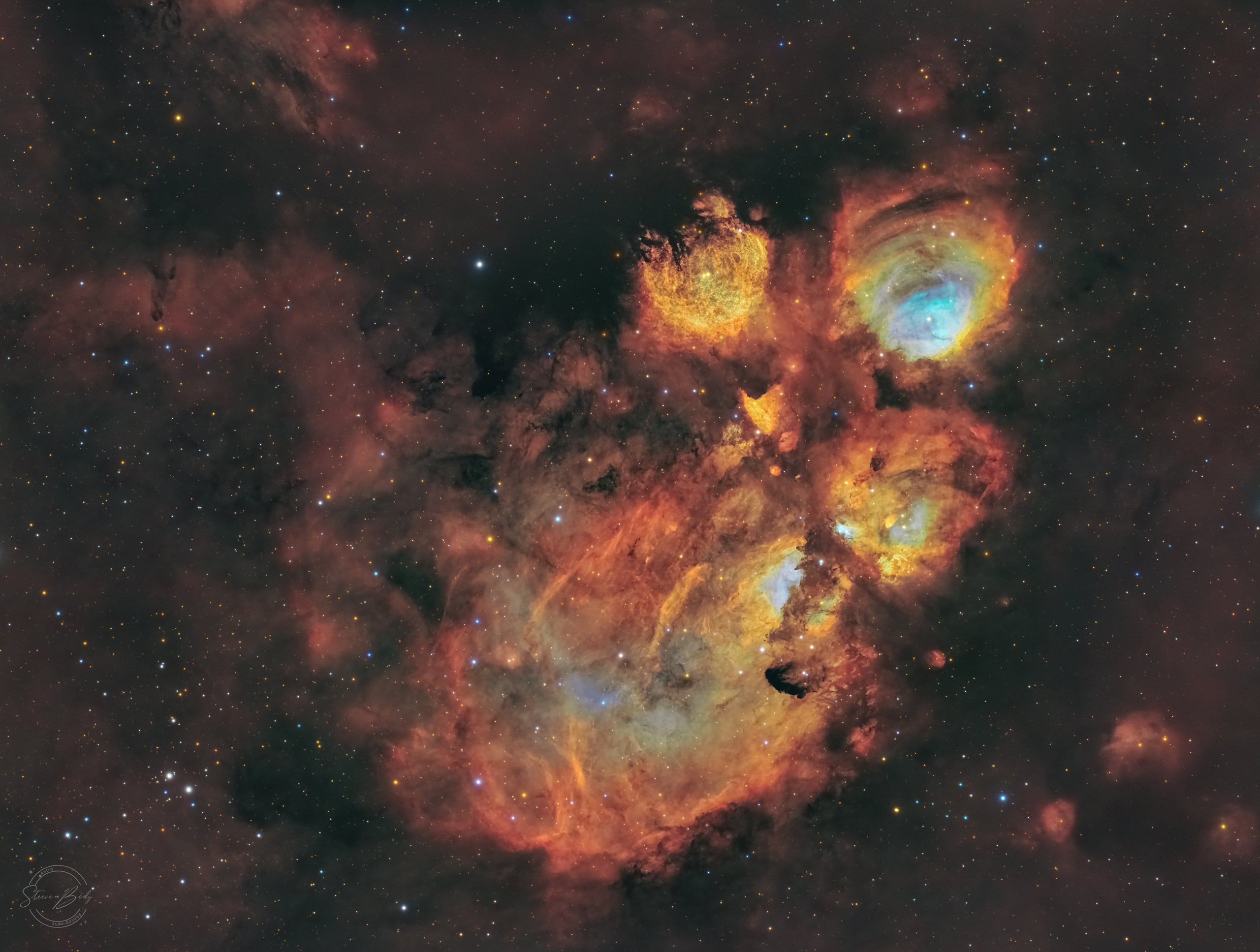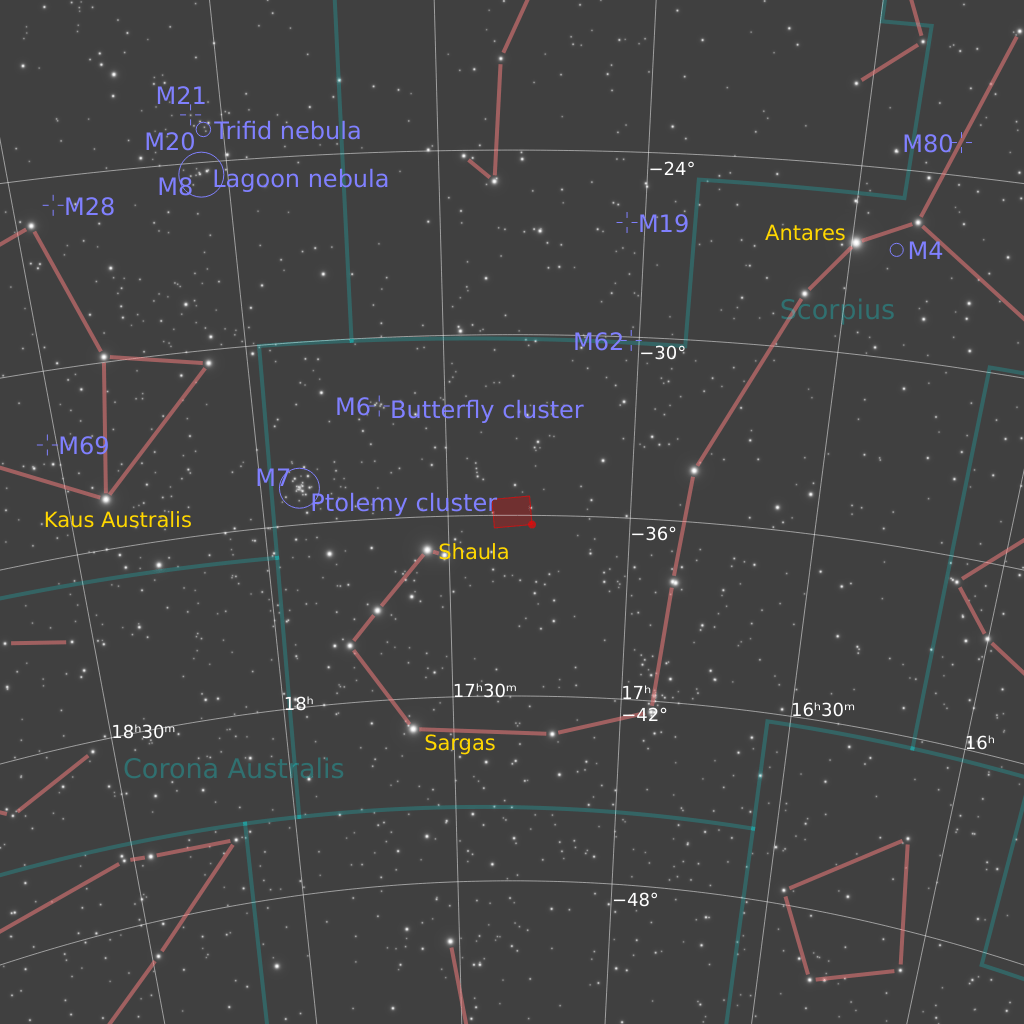Description:
Highlighted in this image is the Cat’s Paw Nebula, also known as NGC 6334. An emission nebula primarily visible from the southern hemisphere, it is situated in the constellation of Scorpius and was discovered in 1837 by astronomer John Herschel from the Cape of Good Hope in South Africa.
Located roughly 5,500 light years from us, the Cat’s Paw Nebula is one of the most active nurseries of massive stars in our galaxy. Its distinct “paw-like” structure is characterized by large bubbles of gas and dust, shaped by intense radiation and powerful stellar winds from the newly formed stars within.
The nebula’s red hues, dominant in this image, arise from its richness in Hydrogen-alpha (Ha) emissions, hinting at a strong presence of hydrogen gas. Additionally, there are considerable sulphur (SII) emissions, which further contribute to the nebula’s vibrant appearance. The presence of doubly-ionised oxygen (OIII), though less, can be detected in some areas of the “paws”, enhancing the nebula’s multi-coloured appeal.
3D Showcase
Presented here is an animated exploration of the Cat’s Paw Nebula in 2.5D. While the image of the nebula itself remains a 2D projection, the stars within it are situated in a 3D space, creating an interactive tour around this stellar nursery.
The accurate positioning of the stars was made possible using parallax data from the Gaia mission, a project led by the European Space Agency tasked with constructing a three-dimensional map of our galaxy. The original image of the nebula was plate-solved and annotated using the Gaia DR3 catalogue in PixInsight, an advanced astrophotography processing software. The resulting data was then exported to a text file, containing the celestial coordinates of the stars.
Using a custom Python script, the text file was processed to calculate each star’s distance based on its parallax, segregate each star into its individual layer and name it according to its distance. These layers, along with the starless image of the nebula, were then imported into After Effects.
Within After Effects, the nebula and stars were arranged according to their actual ‘Z’ positions in space, resulting in a scientifically accurate three-dimensional scene. Automated camera movements were then applied to this scene to generate the animation you see, providing a unique tour around the Cat’s Paw Nebula.
This innovative approach marries scientific data with creative visualization, transforming static images into dynamic and engaging celestial tours. This immersive portrayal of the Cat’s Paw Nebula not only provides a fascinating new perspective on this stellar nursery but also underscores the vastness and complexity of our universe.


